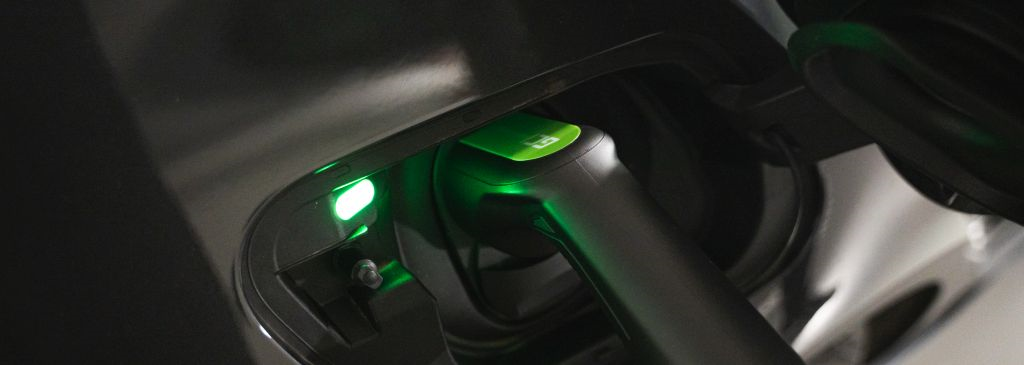Electric cars are powered by electricity from a domestic socket or generally accessible stations. Since many types of hookups and ways to charge your electric car is currently present on the martket, one can raise the question – how those can be distinguished from each other? Which method is best for me? What must I bear in mind? So many questions, yet so few answers. Do not worry, eager user – we will help you find your place in the world of electromobility. Simply check out our electric car charging diagrams along with instructions of how to read them!
Here’s what you’ll find out from this article:
- what are the ways of charging electric cars,
- what the electric car charging scheme looks like and what it represents,
- which method of charging the electric car works best for you.
Ways to charge an electric car
But before we proceed to the electric car charging methods, let us explain thoroughly the key phrase that will appear many times in this article. Namely, charging manners, also often marked as “Modes”. They indicate the specific way the vehicle is connected to the sourcepower and the charging speed that can be achieved.
Having that in mind the short introduction can be perceived as complete. Let us get down straight to business, namely, to overview of electric car charging schemes!
Mode 1
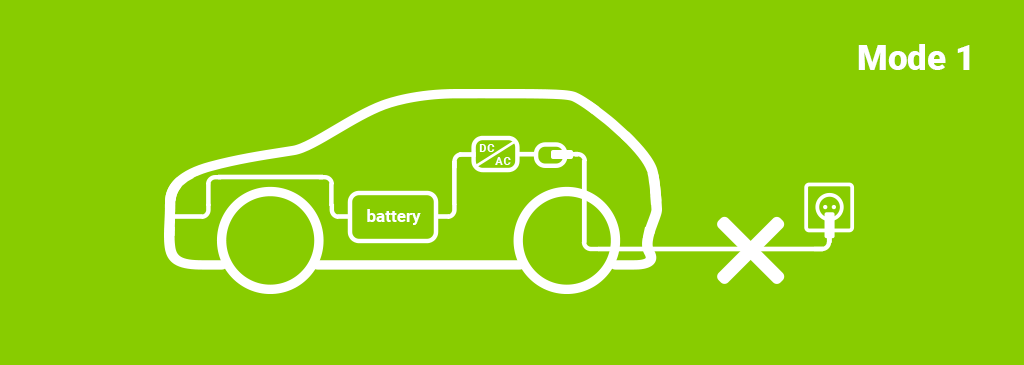
This charging method is based on direct connection of the electric vehicle to a normal socket, which is not equipped with special safety systems. Usually, this type of connection is used to charge e-bikes and e-scooters. Mode 1 is not, however, broadly and freely available. The method is prohibited to use in public places in Italy as well as subjected to restrictions in Denmark, France, Norway, Switzerland and Germany.
The rated values of current and voltage should not exceed 16 A and 250 V for single-phase current, and 16 A and 480 V for three-phase current.
Mode 2
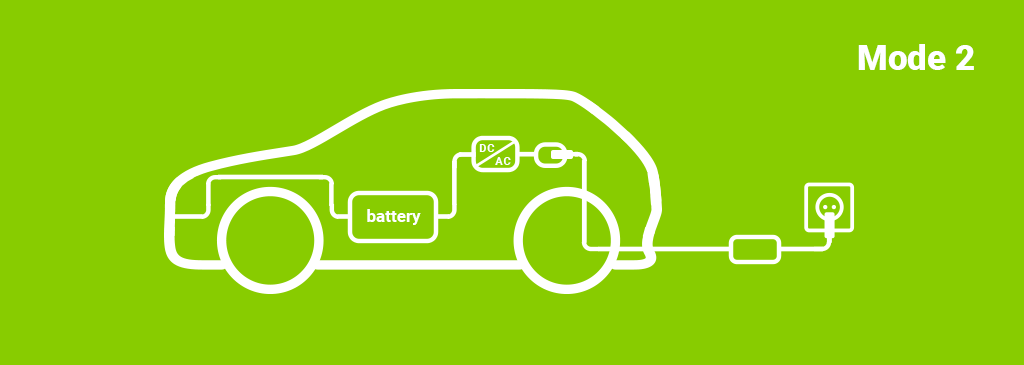

Mode 2, unlike the previous charging method, requires the presence of a specific safety system between the connection point and the electric car. Such a system is placed on the charging cable – the so-called Control Box. As can be seen on the electric car charging scheme presented above, this element is installed on the mobile chargers for the electric vehicle charging. Its shape is quite characteristic and looks like a box with electronics mounted in the centre of the calbe. The advantage of the Mode 2 is its ability to be used in domestic and industrial sockets to power your car.
The nominal current and voltage values, on the other hand, depend on the parameters of the selected charger and the maximum charging speed that the vehicle supports.
Mode 3
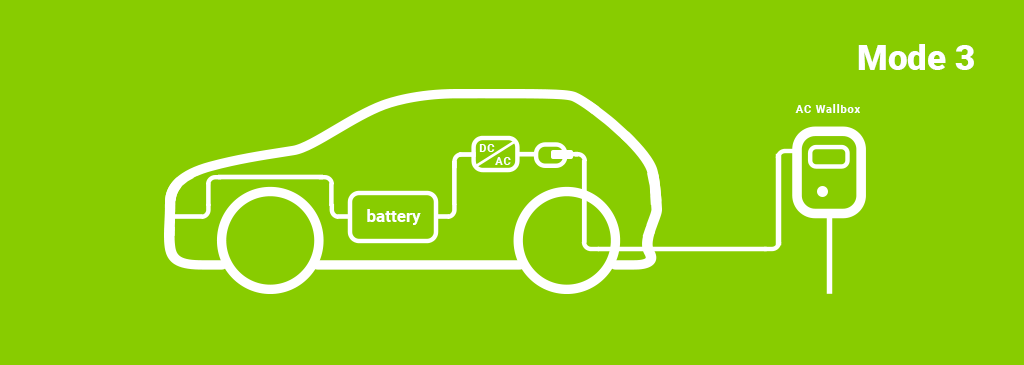

The next Mode is based on vehicle charging method via a power system that is permanently connected to the electricity grid. In this case, the control box is integrated directly with the dedicated charging point. This is a mode in which commercial charging points, wallboxes and all automatic toll collection systems power the vehicle with AC.
Charging stations operating in Mode 3 typically allowing to charge up to 32A and 250V in single-phase mode, as well as up to 32A and 480V in three-phase mode.
Mode 4
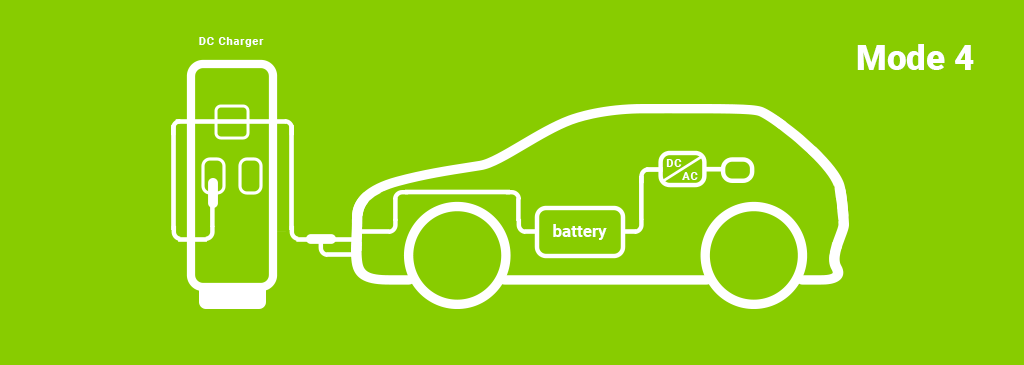

It is the only charging mode that supplies the vehicle wirh DC. This charging method requires an external current converter in the vehicle to which the power cable is connected. In the electric car charging scheme presented above, exact look of this type of connection can be observed. The charging station in Mode 4 is much more capacious than this presented in the previous charging method. Such a situation results due to the presence of a converter responsible for recreating the current from AC to DC before passing through the charging cable of the electric car.
By using Mode 4, the highest power can be achieved – from 50 kW to even 350 kW – depending on the maximum possible power rate of the vehicle in question being charged.
Summary
Done! We have gone through all the possible ways to power your electric vehicle. We sincerely hope that the car charging diagrams we provided for each mode have helped you understand the methods utilized during the charging process. If you already happen to chose the method that works best for your vehicle, don’t forget to visit the Battery Empire in which you will surely find all compatible accessories necessary for EV charging!
Alexandra Smith
Related posts
Most viewed entries
- Polish Inventors Who Changed the World – Do You Know Them All?
- The Scariest Myths About Electronic Devices – Halloween 2024
- The history of bicycle – International Bicycle Day
- Electricity in a camper van on holiday – a conundrum easily solve
- Off-grid installation on a plot. Is it worth it?
- Charging your electric car at home without a wallbox

